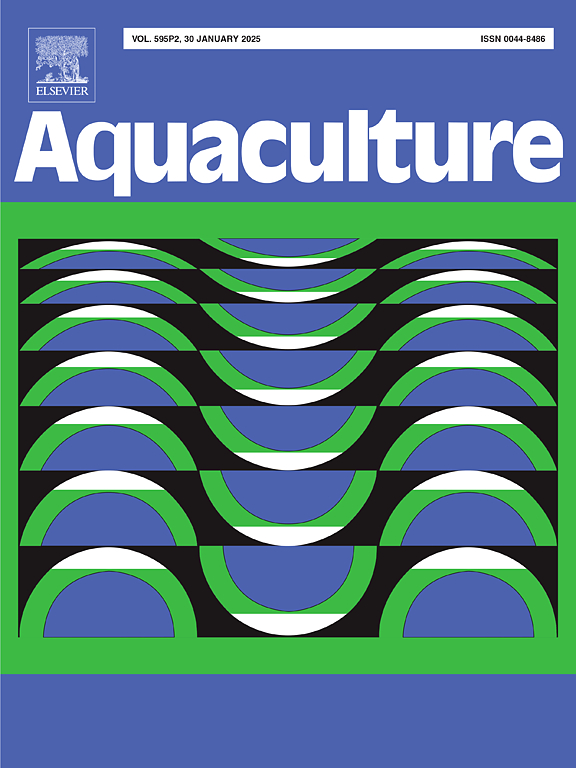Estimation of genetic parameters for upper thermal tolerance and growth traits in grass carp (Ctenopharyngodon idella)
IF 3.9
1区 农林科学
Q1 FISHERIES
引用次数: 0
Abstract
As an ectothermic animal that lives in water for a lifetime, grass carp (Ctenopharyngodon idella) has a strong dependence on environmental temperature. The objective of this study was to estimate the genetic parameters for heat tolerance and growth traits in grass carp using reconstructed pedigree and molecular relatedness. The experimental population consisted of 800 offspring at 60 days old and 55 parents (♀, 32; ♂, 23) from selected line F4 and 539 at 6 months old offspring from selected line F5 with 87 parents (♀, 44; ♂, 43). Genetic genotyping of the experimental population was conducted using 10 pairs of microsatellite markers, and all 10 markers exhibited a high degree of genetic polymorphism across all 1394 grass carp (Ho = 0.751–0.981; He = 0.783–0.942; PIC = 0.759–0.938). Parentage assignment divided F4 individuals into 203 full-sib, and the Pearson correlation coefficient between reconstructed pedigree relatedness and molecular relatedness was 0.475. For the selected line F4, the heritability for each trait based on reconstructed pedigree relatedness (PR) were 0.320 ± 0.092 for body weight (BW), 0.303 ± 0.093 for standard length (SL), 0.246 ± 0.082 for body height (BH), 0.193 ± 0.074 for body thickness (BT), and 0.131 ± 0.063 for upper thermal tolerance (UTT) was 0.131 ± 0.063. Similarly, the heritability for each trait based on molecular relatedness (MR) were 0.330 ± 0.092 for body weight (BW), 0.348 ± 0.097 for standard length (SL), 0.248 ± 0.080 for body height (BH), 0.197 ± 0.073 for body thickness (BT) and the heritability for upper thermal tolerance (UTT) was 0.260 ± 0.037. For the F5 generation, the heritability of body weight (BW) and standard length (SL) estimated by molecular relatedness (MR) was 0.281 ± 0.045 and 0.283 ± 0.044. These results indicate that molecular relatedness is a viable method for estimating genetic parameters when pedigree information is inaccurate or missing. The findings of this study can provide theoretical support for the optimization of breeding programs aimed at developing productive and heat tolerant grass carp strains.
求助全文
约1分钟内获得全文
求助全文
来源期刊

Aquaculture
农林科学-海洋与淡水生物学
CiteScore
8.60
自引率
17.80%
发文量
1246
审稿时长
56 days
期刊介绍:
Aquaculture is an international journal for the exploration, improvement and management of all freshwater and marine food resources. It publishes novel and innovative research of world-wide interest on farming of aquatic organisms, which includes finfish, mollusks, crustaceans and aquatic plants for human consumption. Research on ornamentals is not a focus of the Journal. Aquaculture only publishes papers with a clear relevance to improving aquaculture practices or a potential application.
 求助内容:
求助内容: 应助结果提醒方式:
应助结果提醒方式:


